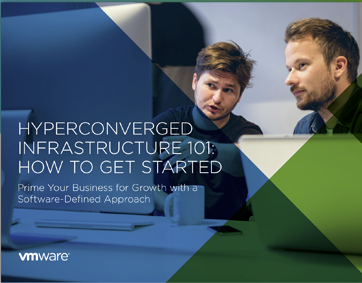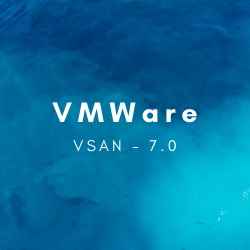vSphere Lifecycle Manager (vLCM) is mainly combination of the following components.Declarative ESXi Cluster Management ,Full Stack Firmware Updates,Simplified OEM Customization,Cluster QuickStart Workflow and Automatic Compatibility checks
Table of Contents
Declarative ESXi Cluster Management
The foundation of vLCM is the declarative cluster lifecycle management. Once vLCM and cluster image management is enabled for a cluster, a desired state is set up. All the ESXi hosts in the cluster adhere to the desired state. When a host drifts from the desired state, the host is remediated to be complainant to the desired state.The vLCM desired state can be covered the following .
ESXi version: A base ESXi image supporting vSphere 7.0 or later.
Vendor Addon: Package provided by the supported host vendor that potentially includes hardware providers, vendor firmware and drivers.
Firmwares & Drivers: Customers can include additional firmware and drivers that are not included in the vendor addon. For example, when using an async driver for a hardware accelerator or NIC.
To enable a cluster with a declarative image, the following prerequisites must be met;
All hosts in the cluster must be running ESXi 7.0 or higher.
All hosts in the cluster must be from the same vendor, ideally same make and model.
Please note that NSX is not supported in first release.
Full Stack Firmware Updates
A Hardware Support Manager (HSM) may be used to integrate with vSphere to check, but also update firmwares and drivers on the system, directly from within the vSphere Client! The HSM is software provided by the hardware vendor as i.e. an OVF image. It includes a plug-in that registers itself as a vCenter Server extension. Hardware vendors provide and manage the firmware & driver updates that are accessed by vLCM using the HSM.
In the initial vSphere 7 release, Dell OpenManage and HP IlO Amplifier are supported.
Simplified OEM Customization
vLCM allows for customers to streamline OEM vendor components into the image. The vendor components and the ESXi image are disassembled in vLCM, making it easier to update the vendor specific components when a new vSphere release is issued. Effectively replacing the need for vendor specific ISOs as this capability replaces this. Vendor addons include vendor customizations for selected servers.
Cluster QuickStart Workflow
When configuring a new cluster, customers have the ability to implement a declarative ESXi host image for the cluster immediately. The image setup in the cluster QuickStart workflow allows for choosing an ESXi base image and the optional vendor addons.
Automatic Compatibility checks
Running the best firmware is key for all hardware devices, as is the case when running hyper-converged infrastructures (HCI) with vSAN is the best example .
With Automatic Compatibility Checks VMWare Customers will greatly benefit if all storage components in an ESXi host perform as optimal as possible, using the best possible firmware.
Checking updates for firmwares and drivers using the desired state in vLCM provides this capability. VMware expanded the checks for storage controllers so that the firmware is also checked against the VMware Compatibility Guide (VCG, also referred to as HCL). vCenter Server with vLCM syncs with the HCL.
When you examine the hardware compatibility option under Cluster > Updates it provides the option to discover and resolve potential hardware compatibility issues. In the first release, this is limited to vSAN storage controllers, although selected NVMe devices are also checked as they use embedded storage controllers.

